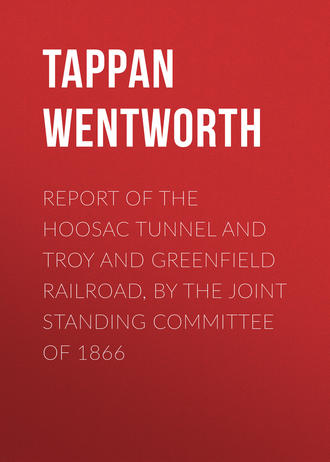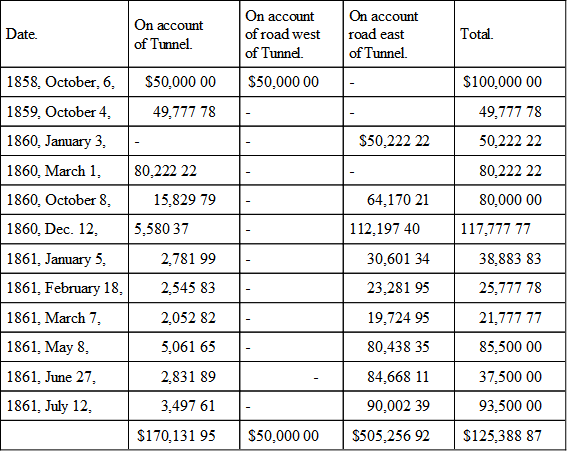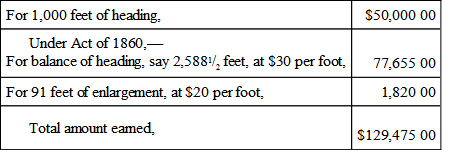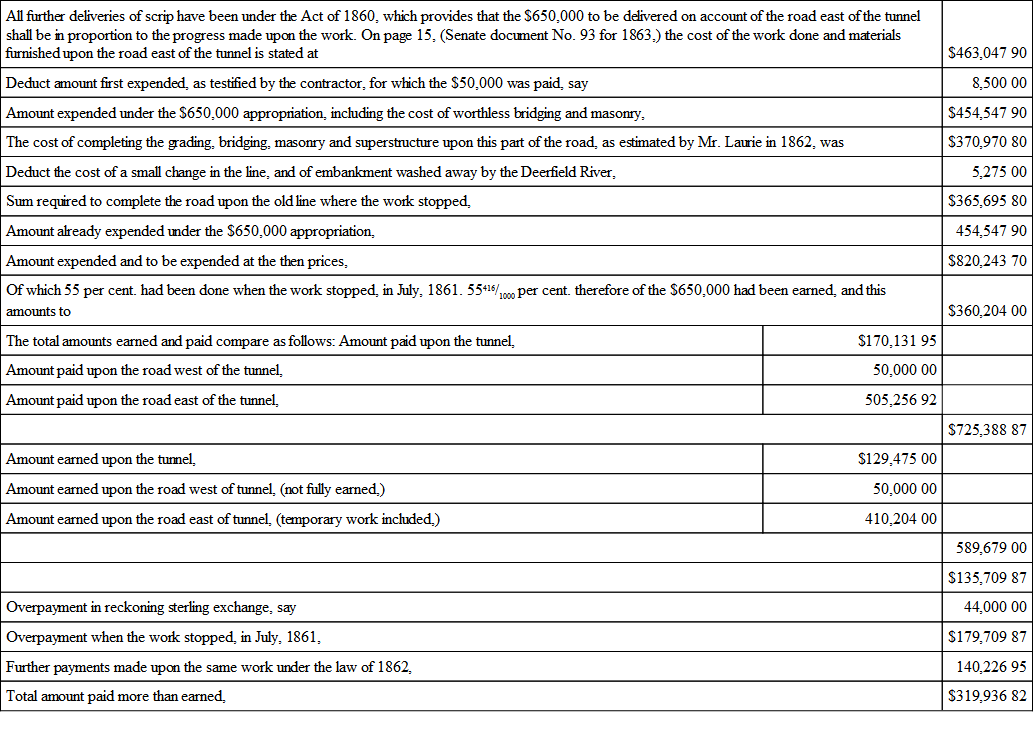 полная версия
полная версияReport of the Hoosac Tunnel and Troy and Greenfield Railroad, by the Joint Standing Committee of 1866
Under the provisions of this Act scrip to the amount of $455,034.70 has been delivered on account of the railroad and $40,131.95 on account of the tunnel.
State scrip was delivered in sterling up to and including the delivery of March 7, 1861, and afterwards in dollar bonds. In this statement the sterling is changed into dollars, to show it all in one currency, and the pound sterling is reckoned, as by the State treasurer when the deliveries were made, at $4.4444/100.
The certificates for amounts due on account of the railroad or tunnel were for irregular sums, and the scrip delivered was in round amounts; the fractional difference sometimes in excess and sometimes below the amount of the certificates is divided between the tunnel and railroad in proportion to the amount due on account of each.
Stated and divided as above, the scrip which has been delivered on account of the railroad and tunnel, is as follows:—

The amount of State scrip which according to statutes, had been earned by the progress made towards constructing the tunnel before the surrender of the property to the State, may be stated as follows:—
Strictly considered, no portion of the tunnel at the East End was cut to the required size of 14 feet wide and 18 feet high, much of it was less than 12 feet wide, and some of it only about 13 feet high. At the entrance the excavation was so nearly sufficient that only a small amount more was required to bring it to full size, and had all the rest been well done, a not very exacting inspector might have passed 25 feet of this as completed. The remaining 2,964 feet of penetration at this end could form no ground whatever for a claim as completed work.
At the West Shaft the heading had been driven in both directions 561/2 feet.
At the West End the total penetration had been 543 feet. Of this distance 26 feet had been arched with stone—40 feet is in rock, standing without support, and 477 feet is temporarily supported with timbers. Under the assumption that the 40 feet left unsupported is safe enough to be left permanently 80, then 66 feet was completed at this end, giving at all points a total penetration of 3,5881/2 feet, of which, 91 feet was completed.
It is clear that the payment of $50,000, under the Act of April 5, 1854, for 1,000 feet of completed tunnel, was not earned.
Under the Act of 1859, scrip to the amount of $50,000 was to be delivered upon the completion of 1,000 feet of heading, and though the prior conditions of this Act had not been complied with, this amount may fairly be considered as having been earned.
The next payment of $30,222.22 for the completion of the second 1,000 feet of tunnel was clearly not earned.
All subsequent payments were made under the Act of April 4, 1860, providing for the payment of $30 per foot for heading and $20 per foot for the enlargement.
The total amount according to the several Acts is as follows:—
Under the Act of 1859,—

The amount of State scrip which under the statute had been earned by the progress made in constructing the railroad may now be considered.
The first payment of $50,000 under the Act of 1854, should have been for seven miles of completed railroad. The certificate of the engineer, upon which it was paid, gave (see page 82 of House document No. 185 for 1860,) the length of rails laid as upwards of seven miles; nothing in the certificate showed then any part of it was completed road, and upon investigation then made it proved that while most of it was done, a part near the west end of the tunnel "was not ten feet wide," and would cost several thousand dollars to complete it. It is clear that this payment had not then been earned in the manner provided by the statute.
The second payment was on account of the road, under the Act of 1859, for grading three miles of road, "said three miles being all situated within four miles of the point of commencement;" Page 30 of House document No. 185 for 1860 says of this grading, "the continuous line is interrupted by fourteen gaps of cuts and fills;" it is thus made up of fifteen separate pieces, avoiding all but the cheapest part of the work, and costing, as the contractor who did the work certifies, between $8,000 and $9,000. Under, to say the least, a somewhat liberal construction of the Act, $50,000 was said to have been earned by doing this grading.

If proper deductions had been made from the amount earned on account of the unfinished condition of the seven miles west of the tunnel, on which the first $50,000 was paid, and on account of the worthless masonry and bridging which have been reckoned in at full cost, the overpayments would be shown more correctly to exceed in amount the sum of $350,000.
1
At the time of the presentation of this Report, the Committee understood that the water was entirely removed from the shaft and tunnel.
2
Hon. Alvah Crocker has not acted on the Committee since his appointment upon the commission.



